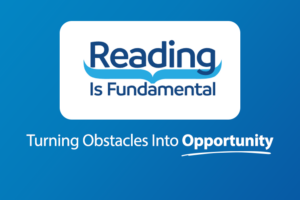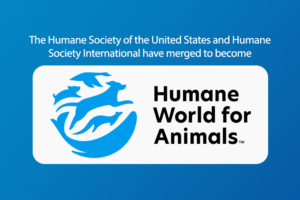America's Charities | May 29, 2014
Four Workplace Giving Myths
I had a conversation with a family member recently when asking him if he “gives at the office.” He stated that he does not participate in their company’s workplace giving program. When I asked why, he explained, “My small dollars won’t make a difference and besides, we can’t select the charity we want to give to.” I gave him some advice to take back to his employer that will hopefully change their outlook on their program.
Many employees think just because a workplace giving program is set up a particular way, that is the only option and the program cannot be changed, particularly if “charity choice” is not part of the program. Many companies are very focused on employee engagement and participation and now offer charity choice – meaning you can give to any 501c3 organization. A successful workplace giving program is supposed to be designed with the EMPLOYEE in mind. If your employer stays true to this notion, your company will have a successful program with increased participation and company-wide acceptance.
While the concept of workplace giving is not new, it may be new to you.
If you are an employer, an online workplace giving program is a great way to engage your employees in philanthropy while meeting your CSR goals, not to mention the additional uses it can be used for such as volunteering, matching gift, disaster relief and employee emergency assistance.
If you are an employee, get involved in your company’s workplace giving program (or ask that one be created). It’s a great way to meet your philanthropic goals and to find volunteer opportunities for yourself and for your family.
I voluntarily participate in my employer’s workplace giving program (after learning that the four myths listed below) are just that, myths. What’s best? I know that my money is being well-spent at the charities that I give to (five annually), and that I am helping those that need it most.
I am a curious person by nature and will always ask, “Why?” The following myths about workplace giving programs were brought to my attention recently that I thought to share with you as well.
Myth #1 – “I don’t make enough to give at the office.”
Giving comes in all sizes – from $1 to $100s of dollars, employees from all walks of life and with various income levels can become philanthropist. Imagine this – your $1 per paycheck equals 9 meals through Feeding America. For every dollar donated, Feeding America secures and distributes 9 meals on behalf of local food banks. At the end of the year, you would have made an impact by paying for 234 meals through Feeding America (if you receive 26 pay checks annually). So yes, even giving one dollar per pay period through payroll deduction at the office can and does help!
Myth #2 – “Not enough of my donation goes to the charity.”
Not in the case of an employer-sponsored program. Most employers are willing to pick up the administrative cost of facilitating a workplace giving program so that 100% of your donation goes to the charity of YOUR choice. These fees should be encouraged by the fiscal agency (such as America’s Charities) and are a very low cost to the employer to undertake (and to show support of the employee’s efforts). However, I am a firm believer that it takes money to do a good job. Charities with administrative fees that may be above 25% is not frowned upon by me; it really depends on what is being done with the funds. For instance, according to the Washington Post, charities need to spend on research, training and financial systems, all classified as “overhead,” to be effective. Those that shortchange these investments — and many do — are less likely to achieve their goals. I don’t know about you, but I hope that my charity of choice is deeply rooted in research, training and financial systems! What truly matters is if your donation is helping the charity to make an impact. Don’t be afraid, ask your charity for information on how your donation in making an impact. Any charity worth its weight (and your continued donations), will gladly answer.
Myth #3 – “Good charities are easy to find.”
Not all true. While the National Center for Charitable Statistics (NCCS) states that there are more than 1.5 million nonprofit organizations registered in the U.S. (and with the IRS accepting 99.5% of all nonprofit determination application requests, that number is expected to rise), you would think that finding a “good” charity is easy to find – it isn’t – but there is hope. According to the Washington Post, the mutual fund industry employs 159,000 people to help investors make good choices. But there are fewer than 100 people nationwide whose jobs are to help the giving public make wise donations. However, organizations like “federations” can be used to help you make a wise giving decision and to know that your charity has been fully “vetted.” I encourage you to do a little homework on your own too. The Washington Post also states that on average, Americans spend more time watching television in one day than they do researching charities in an entire year? Silly, right? If you take just a few hours to learn more about the charity you are considering donating to, you will be amazed by what you may find. There are also many vetting and reporting agencies that can give you information on a charity’s performance, impact and even volunteer opportunities (by the way, I highly suggest that you participate in a volunteer opportunity at your considered charity prior to giving to the organization – it gives you a great inside view – much like buying a car, you should test drive it first, right?).
Myth #4 – “Giving through a workplace giving campaign is too cumbersome.”
Not if your employer has an experienced fiscal partner to help. Organizations like a federation (America’s Charities is a federation), help employers from the planning stages of a program all the way to implementation to campaign wrap-up and beyond. A federation partnership is close to having four to five more employees to help get the program up and running – without having to pay the additional salaries – and a super way to connect directly to charities for volunteer opportunities, work fairs, or special fundraising events. Federations help your employer meet YOUR NEEDS and more. It’s really that simple and we really do bring a team along with us to help facilitate a low-cost, highly impactful (and fun) workplace giving program designed with YOU – the employee – in mind!
Giving is a CHOICE. How you give and who you give to is a personal CHOICE. From payroll deduction, to credit card, to vacation hours, to stock options – all should be available to you to make a wise CHOICE in helping our communities become a better place to work and live.
So the next time someone asks if you “give at the office,” I hope you proudly say, “Yes!”
We love talking workplace giving, helping employers set CSR goals and employees become philanthropist. It’s what we do best. Contact us today!
Get Resources and Insights Straight To Your Inbox
Explore More Articles
The Time to Act is Now
The results of the 2024 National Assessment of Educational Progress (NAEP) are in, and the findings are, in a word, heartbreaking. This assessment serves as…
Read ArticleOpen Position: Non-Profit Account Manager, Employee Assistance Funds & Scholarships (Remote – Full Time)
We are professional, agile, customer-centric and our goal is to inspire employees and organizations to support causes they care about. We help nonprofits fundraise unrestricted,…
Read ArticleEXCITING NEWS: Humane Society of The United States and Humane Society International is now HUMANE WORLD FOR ANIMALS
For over 70 years, Humane World for Animals, formerly called the Humane Society of the United States and Humane Society International, has worked around the globe to…
Read ArticleGet Resources and Insights Straight To Your Inbox
Receive our monthly/bi-monthly newsletter filled with information about causes, nonprofit impact, and topics important for corporate social responsibility and employee engagement professionals, including disaster response, workplace giving, matching gifts, employee assistance funds, volunteering, scholarship award program management, grantmaking, and other philanthropic initiatives.




